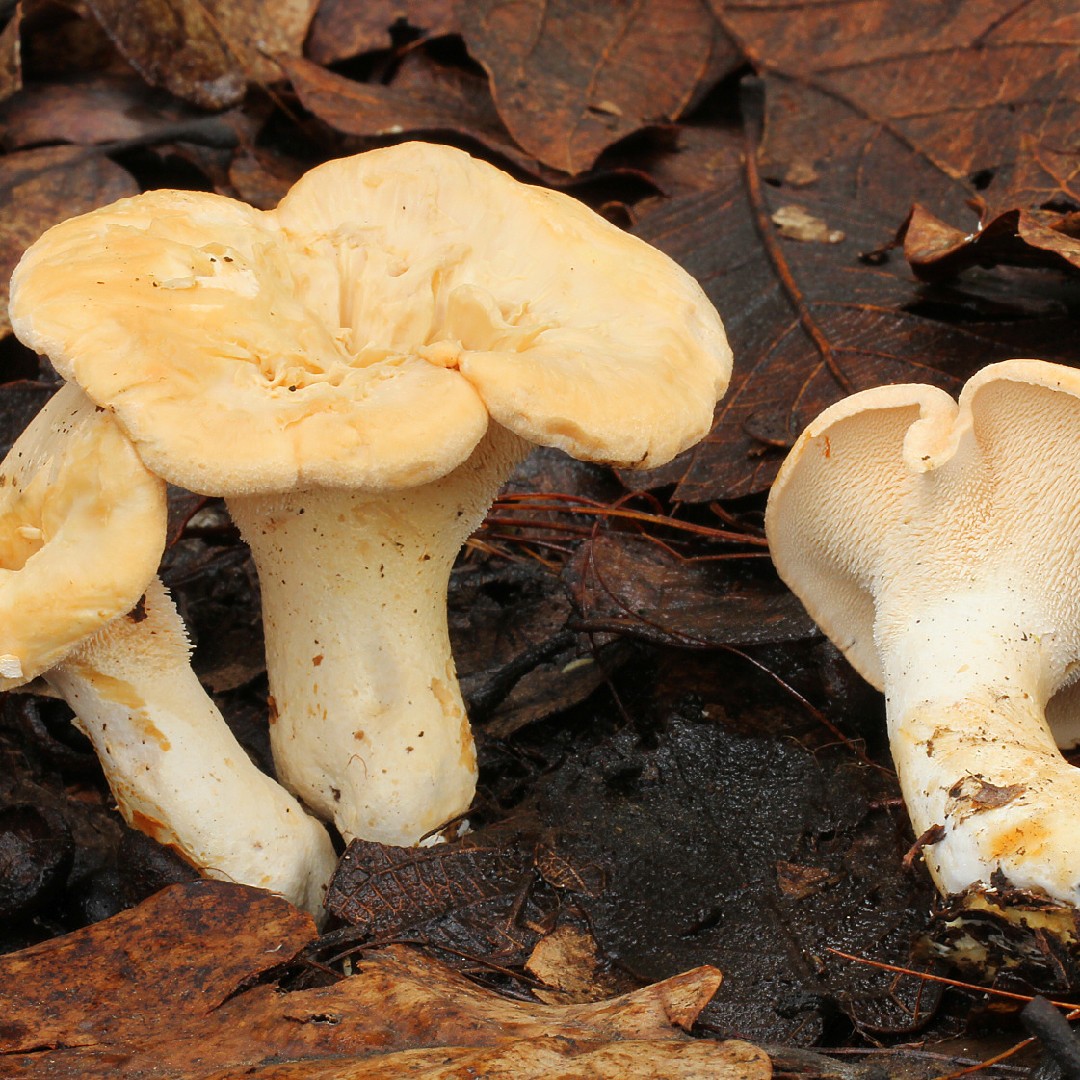Hydnoid fungi
Scientific name: Hydnaceae
Hydnoid fungi
Scientific name: Hydnaceae
 Photo By Alan Rockefeller (Alan Rockefeller) , used under CC-BY-SA-3.0 /Cropped and compressed from original
Photo By Alan Rockefeller (Alan Rockefeller) , used under CC-BY-SA-3.0 /Cropped and compressed from original Description
Members of the Hydnaceae mushroom family are often called tooth fungi because of the tooth-like spines that hang below their fruiting bodies. The mushrooms in this family are ectomycorrhizal, meaning that they form symbiotic relationships with the roots of trees and plants. Hydnaceae mushrooms are typically yellow, orange, or white in color.
Species of Hydnoid fungi

 Photo By Alan Rockefeller (Alan Rockefeller) , used under CC-BY-SA-3.0 /Cropped and compressed from original
Photo By Alan Rockefeller (Alan Rockefeller) , used under CC-BY-SA-3.0 /Cropped and compressed from original